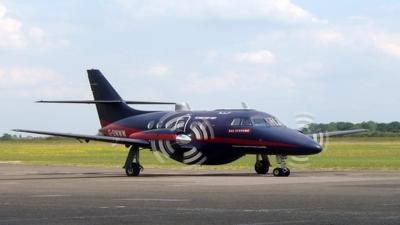Sun, Jun 24, 2012
Trials Will Include First Autonomous, Vision-Based Weather-Avoidance Routing
A Jetstream aircraft known as ‘The Flying Test Bed’, which can fly as if it were a UAV, is undergoing a series of flight trials in preparation for the first maiden flight of a surrogate UAV in UK shared airspace later this year.

The aircraft will fly using Instrument Flight Rules under air traffic control. In preparation, trials taking place this month include the world’s first use of autonomous, vision-based weather-avoidance routing and the first UK surrogate flight of a fully functional visual sense-and-avoid system which includes collision avoidance tests using a second aircraft. This trial will begin to demonstrate to regulators such as the Civil Air Authority and air traffic control service providers, the progress made towards achieving the safe use of UAVs in UK airspace.
The new technology is part of a suite of innovations being brought together for the first time as a UK industry-led program known as ASTRAEA (Autonomous Systems Technology Related Airborne Evaluation & Assessment); a UK industry-led consortium focusing on the technologies, systems, facilities, procedures and regulations that will allow autonomous vehicles to operate safely and routinely in civil airspace over the United Kingdom.
Lambert Dopping-Hepenstal, the Engineering Director at BAE Systems responsible for the ASTRAEA programme said: “The use of a surrogate Uninhabited Air Vehicle allows prototype autonomous systems developed by the ASTRAEA team to be evaluated safely in the air. The BAE Systems Jetstream Flying Test Bed has been configured as a “surrogate UAV’ where the on-board pilots can take their hands off the controls and hand over control to the on-board system developed by the ASTRAEA team. Racks of computers and control systems in the rear of the aircraft mean it can fly as if it were a UAV without any input from the pilots.
He continued: “The ASTRAEA system is capable of preventing mid-air collisions with other aircraft using a ‘sense and avoid’ system, detecting and avoiding bad weather conditions and relaying air traffic control instructions to the remote pilot via satellite to the ground control station. The weather avoidance system will use sophisticated image processing techniques to detect and avoid clouds and is just one of the new capabilities being tested on board the Jetstream.”
From now and until the winter, the ASTRAEA system on-board the Jetstream will be put through its paces, in a series of at least 20 flight tests over the Irish Sea and through UK airspace. (Image provided by BAe)
More News
Aero Linx: International Federation of Airworthiness (IFA) We aim to be the most internationally respected independent authority on the subject of Airworthiness. IFA uniquely combi>[...]
Ultrahigh Frequency (UHF) The frequency band between 300 and 3,000 MHz. The bank of radio frequencies used for military air/ground voice communications. In some instances this may >[...]
A Few Questions AND Answers To Help You Get MORE Out of ANN! 1) I forgot my password. How do I find it? 1) Easy... click here and give us your e-mail address--we'll send it to you >[...]
From 2019 (YouTube Edition): Learning To Paint Without Getting Any On Your Hands PPG's Aerospace Coatings Academy is a tool designed to teach everything one needs to know about all>[...]
Also: Sustainable Aircraft Test Put Aside, More Falcon 9 Ops, Wyoming ANG Rescue, Oreo Cookie Into Orbit Joby Aviation has reason to celebrate, recently completing its first full t>[...]
 ANN's Daily Aero-Linx (05.06.25)
ANN's Daily Aero-Linx (05.06.25) ANN's Daily Aero-Term (05.06.25): Ultrahigh Frequency (UHF)
ANN's Daily Aero-Term (05.06.25): Ultrahigh Frequency (UHF) ANN FAQ: Q&A 101
ANN FAQ: Q&A 101 Classic Aero-TV: Virtual Reality Painting--PPG Leverages Technology for Training
Classic Aero-TV: Virtual Reality Painting--PPG Leverages Technology for Training Airborne 05.02.25: Joby Crewed Milestone, Diamond Club, Canadian Pilot Insurance
Airborne 05.02.25: Joby Crewed Milestone, Diamond Club, Canadian Pilot Insurance



